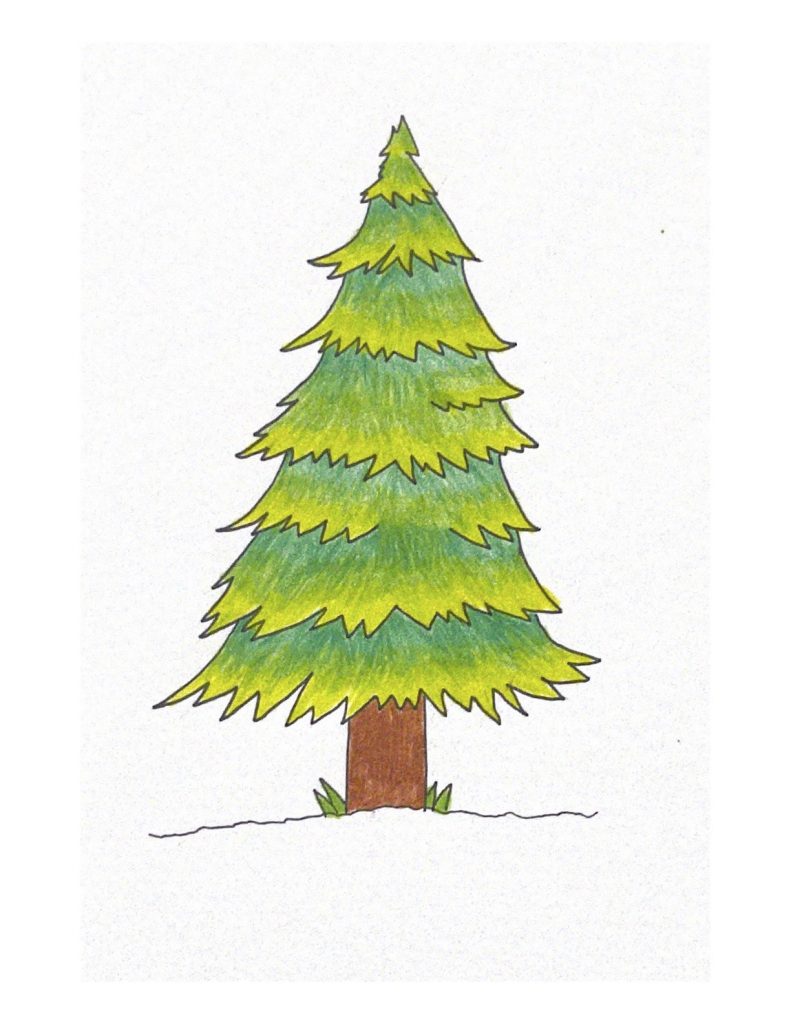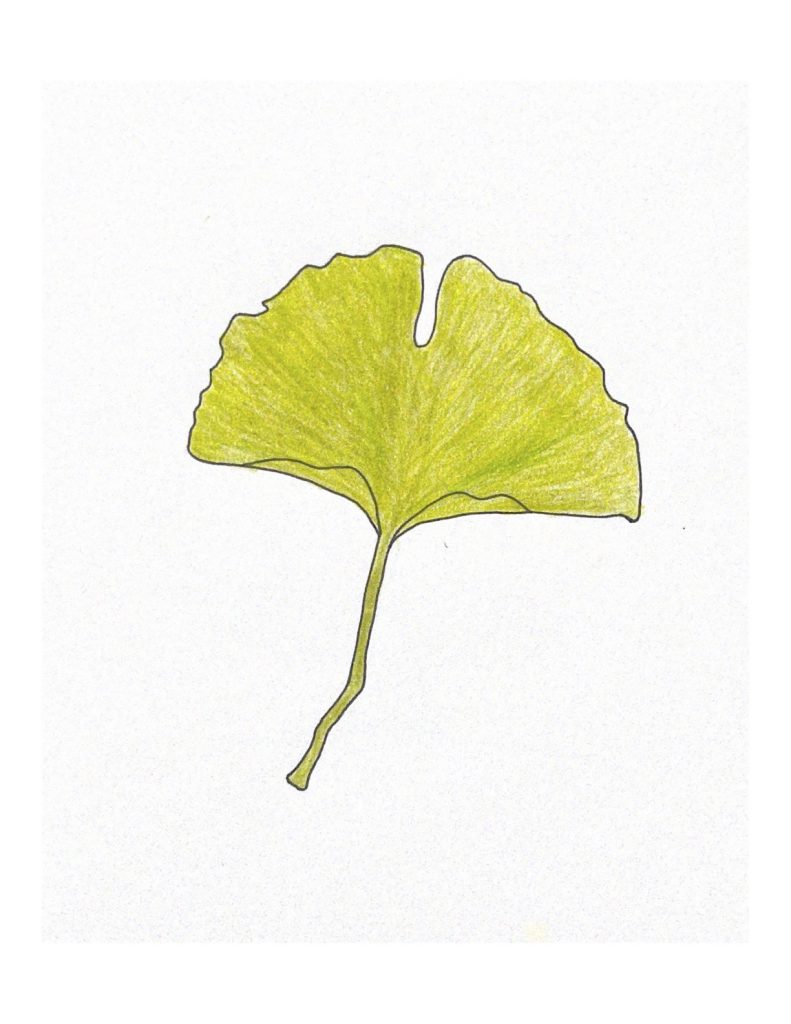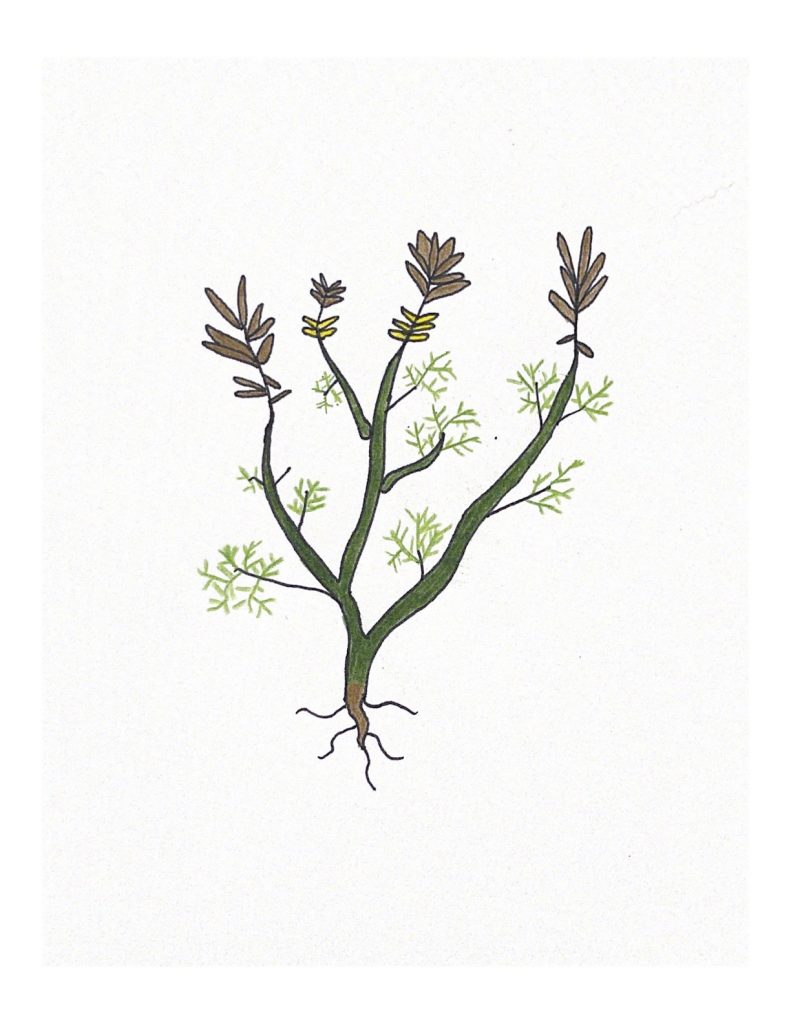
The World of Jurassic Flora
If you have ever seen the movie The Land Before Time, you are probably familiar with the scene where a young brontosaurus named Littlefoot stumbles upon a leaf referred to as a “tree star”. It most closely resembles the foliage of a sycamore tree, which personally rubs me the wrong way, and I’ll tell you why: sycamores are angiosperms, meaning that they have seeds enclosed in carpels (the female reproductive part of a flower). The phylogenic diversification of early angiosperms is hypothesized to have taken place during the early Cretaceous period, which took place approximately 135-65 million years ago.1 The Land Before Time is set during the period before—the late Jurassic era (approximately 163.5-145 million years ago). Even though these periods may seem close to each other, the pro-angiosperms that developed during the early Cretaceous period were much simpler organisms than the relatively complex sycamore tree.1 This made me think—if the dinosaur movies I grew up watching were indoctrinating me with a false narrative of what the world looked like in the Jurassic period, what would an accurate description of the flora during this time look like?
Coniferous Jungles

There was an abundance of different types of plants even before the evolution of complex angiosperms, so I will only be discussing vascular plants in this article. Vascular plants are defined as land plants with specialized tissues for conducting water and minerals. During the Jurassic period, most of the landscape was dominated by lush jungles. Unlike the archetypal modern jungle many people are familiar with—comprising of palm trees, tropical fruits and flowers—these jungles were dominated by conifers, also referred to as cone-bearing trees.2 Some of the most prominent conifers in these prehistoric jungles still exist today, such as trees in the pine family (Pinaceae). An extinct conifer family, Cheirolepidiaceae, dominated low-altitude vegetation, along with the also extinct order Bennettitales, a shrubby cycad.2
Cycads

Cycadophyta is a division of the kingdom Plantae that is composed largely of plants with short, stubby “trunks’’ and a crown of evergreen fronds, known as cycads.3 The seed fern, discussed later in the article, is also a member of Cycadophyta. Cycadophyta is composed of mostly extinct species and genuses, such as Nilssonia, Pterophyllum, and Cycadeospermum.4 All of the modern relatives of the species are dioecious—being either female or male, not both—and are easily mischaracterized as palms. There are a few species that still exist today, and they also tend to be quite expensive. Some specimens sell for thousands of dollars! An example of an existing genus of Cycadophyta are cycas, which are recognizable by their dark green, curling leaves, and seeds that are arranged in a whorl at the top of the trunk, rather than in compact cones.5

Ginkgos
Ginkgos also constituted a portion of Jurassic flora. Ginkgophyta, another division of Plantae, only has one still-existing species, Ginkgo biloba.6 Back in the Jurassic period, there were many more species of Ginkgos. Whereas Ginkgo biloba belongs to the genus Ginkgo, there used to be two additional genuses, Ginkgoites and Baiera. Relative to the geological time scale, the variety of plants within Ginkgophyta has declined rapidly. It has been whittled down to only one species within the last 5 million years, which is a relatively short period of time considering that the Earth is around 4.5 billion years old. So what happened to all the Ginkgo species? It is hypothesized that a combination of climate change and loss of certain seed-dispersing animals (such as some non-avian dinosaurs) could have been driving factors of their eradication.7 These days the Ginkgo biloba is largely revered for its medicinal properties. For thousands of years, It has been a huge part of traditional Eastern medicine with purported benefits such as aiding memory-loss.7

Ferns
Beneath the canopy of Gingkos and conifers, ferns were the dominant ground cover during the Jurassic era.2 There were two main types of ferns at this time: the common fern and the now-extinct seed fern.8 The common fern reproduces via spores on the underside of its fronds. Some species that were abundant during the Jurassic period were Coniopteris, Todites, and Cladophlebis (all extinct).9 Today, ferns such as Nephrolepis exaltata, the Boston fern, are typically adored as houseplants. The term “seed ferns” refers to plants that resembled ferns but reproduced by means of seeds. Although they had seeds, seed ferns were classified as gymnosperms, not angiosperms. This is because their seeds were not enclosed in a carpel. The name gymnosperm means “naked seed”, whereas angiosperm translates to “enclosed seed”. Sagenopteris and Ptilozamites were some of the seed fern genuses that existed during the Jurassic era.8 In addition to ferns, horsetails were also a prominent ground-cover.10 Horsetails are still around today and share a common ancestor with ferns. The horsetails that existed during the Jurassic period were much larger than the ones that exist today. A typical horsetail these days stands around thirty centimeters, but back then some species of horsetails were the same size as large trees. Horsetails were an important food source for many omnivorous and herbivorous dinosaurs.

Origins of Flowering Plants

As I mentioned in the beginning of this article, angiosperms did not begin their diversification until the early Cretaceous period, but it is hypothesized that cycadophytes were the predecessors to angiosperms. The fossils of many extinct cycads show that these plants had structures that could very easily be identified as precursors to early flowering plants.11 The first reported flowering plant was in the genus archaefructus. The fossils of this small, aquatic, herbaceous plant were found in China, Southwest of Beipiao.11 The discovery of archaefructus helped solidify the hypothesis that the ecological radiation and diversification of angiosperms had not occurred until the early Cretaceous or later.12
When I think of the Jurassic period, I think of a lush forest with towering pine trees. Beneath the canopy is a layer of Gingkos and large cycads. Ferns and other dominant ground-cover span the forest floor. Imagine if this was the background to your favorite dinosaur movie! Not only would it be educational, but it would also transport the audience to an unfamiliar world that was nonetheless key to the way that life has evolved on earth today.
References
- Friis, Else Marie., Peter R. Crane, and Kaj Raunsgaard. Pedersen. Early Flowers and Angiosperm Evolution. 223.Cambridge ;: Cambridge University Press, 2011. Print.
- Herrera, Fernando. Jurassic Period. 2012: 818–820. Print.
- Norstog, Knut J.. “Cycadophyte”. Encyclopedia Britannica, 30 Apr. 2017, https://www.britannica.com/plant/cycadophyte. Accessed 29 March 2021.
- Scanu, Giovanni Giuseppe. “The Jurassic Flora of Sardinia — A New Piece in the Palaeobiogeographic Puzzle of the Middle Jurassic.” Review of Palaeobotany and Palynology 218 (2015): n. pag. Print.
- Britannica, The Editors of Encyclopaedia. “Cycas”. Encyclopedia Britannica, 5 Feb. 2013, https://www.britannica.com/plant/Cycas. Accessed 29 March 2021.
- Gifford, Ernest M.. “Ginkgophyte”. Encyclopedia Britannica, 4 Sep. 2016, https://www.britannica.com/plant/ginkgophyte. Accessed 28 March 2021.
- Crane, Peter. Ginkgo : The Tree That Time Forgot. New Haven, CT: Yale University Press,, 2013. Web.
- Martin, Elizabeth. “Seed Ferns.” A Dictionary of Biology 2015. Web.
- Barbacka, M., Kustatscher, E. & Bodor, E.R. Ferns of the Lower Jurassic from the Mecsek Mountains (Hungary): taxonomy and palaeoecology. PalZ 93, 151–185 (2019). https://doi.org/10.1007/s12542-018-0430-8
- Seward, A. C., and Marie Carmichael Stopes. Catalogue of the Mesozoic Plants in the Department of Geology, British Museum (Natural History). Trustees of the B.M., 1894.
- In Search of the First Flower: A Jurassic Angiosperm, Archaefructus, from Northeast China.” Science (New York, N.Y.) 282.5394 (1998): 1692–1695. Web.
- Wikipedia contributors. “Archaefructus.” Wikipedia, The Free Encyclopedia. Wikipedia, The Free Encyclopedia, 12 Nov. 2020. Web. 30 Mar. 2021.